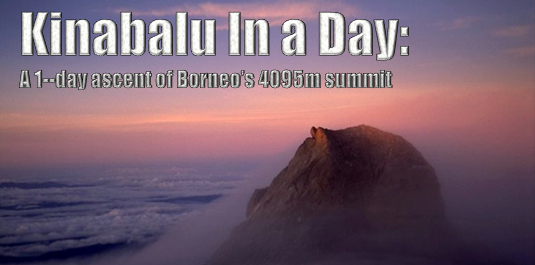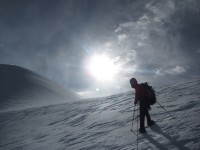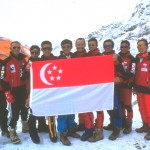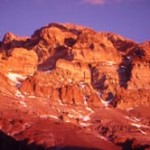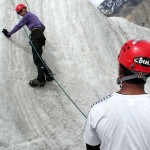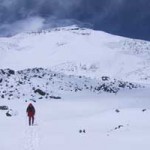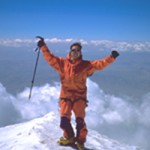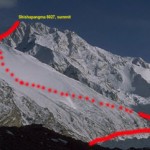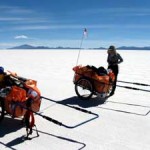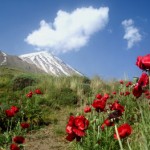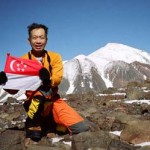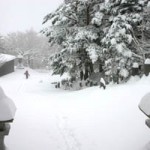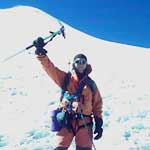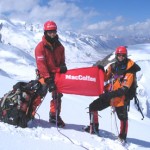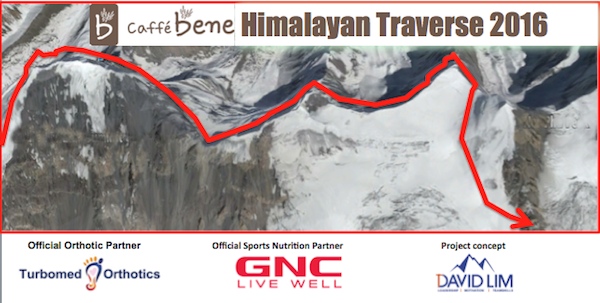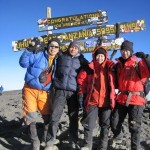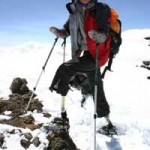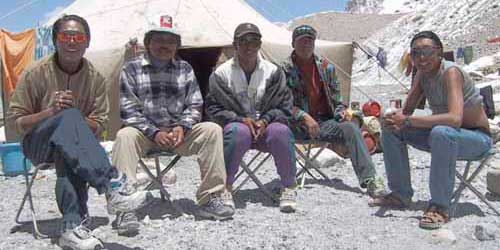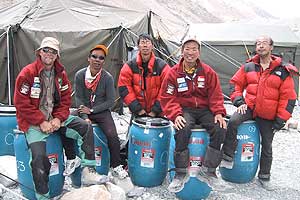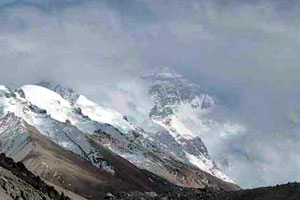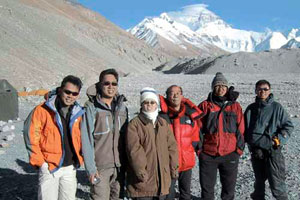Gil’s report…
Ola,
Quando cheguei ao campo 5, a 7.800m de altitude, apos cumprir uma das etapas mais dificeis da escalada do Everest, a subida da espetacular crista norte, Rozani olhou para mim com olhar exausto e apreensivo, e disse – Gil, precisamos descer para o Colo Norte, David esta mal; neste momento terminava a nossa ascencao a maior montanha da Terra. Tinhamos chegado ao limite da seguranca – a integridade fisica dos membros do time estava muito acima do cume da montanha.
Partimos do Campo Base no dia 12 de maio rumo ao Topo do Mundo. Seria a nossa ultima ida para cima, agora para tentar chegar ao cume. O tempo como sempre mal, muita neve e vento. Apos dois dias de caminhada chegamos ao Campo Base Avancado (ABC – 6.500m) onde ficariamos de prontidao de acordo com a meteorologia. No dia 15 de maio, com total incerteza do tempo, Michael e Terry, dois americanos clientes da Internatinal Mountain Guides, empresa que compartilhavamos o campo base e o base avancado, partiram para a escalada final do Everest, acompanhados de quatro fortes Sherpas. O tempo sempre ruim causava apreensao. Acompanhavamos pelo radio cada passo dos 6 escaladores. No ABC, uma pequena cidade de barracas, todas as expedicoes trocavam informacoes acerca da previsao da meteorologia. 18 de maio, o dia previsto para eles chegarem ao cume, amanheceu ensolarado, sem vento, perfeito para chegar ao topo. Foi um presente merecido para eles, e os seis foram os primeiros do milenio a alcansar o topo do mundo. Euforia no ABC, pois alem do sucesso deles a meteorologica previa tempo otimo ate o dia 24, pelo menos.
Partimos no dia seguinte para o Colo Norte (7100m), acompanhados de, pelo menos, mais de 30 escaladores de diversas partes do mundo. Entre estes estavam Claire e Bertrand, um casal de franceses que iriam tentar decolar de Paraglider do cume em voo duplo. Chegamos exaustos no Colo Norte, porem entusiasmados pelo bom tempo. No dia seguinte, enfrentariamos a Crista Norte do Everest ate o Campo 5 a 7.800m de altitude, o trecho mais dificil de toda a escalada afora o dia final de chegada ao cume.
20 de maio acordamos as 4 horas e apos todos os preparativos necessarios partimos para a crista as 7:15hs. A crista, em sua maior parte, eh uma enorme lingua de gelo com inclinacao media de 45 graus. O Campo 5 fica 200m na vertival apos terminar a lingua de gelo. A subida eh extremamente lenta; ao longe os escaladores formam um linha de pontos negros praticamente estacionada. Durante a subida me chamou a atencao um Georgiano, que sabia tudo sobre o futebol brasileiro. Pelas 11:00hs comecou a ventar e a chegar nuvens. Esta crista eh uma das situacoes mais expostas de toda a escalada. O vento comecava a dar rajadas de mais de 100 km/h e levantava a neve produzindo o chamado vento branco. A subida comecava a se tornar cada vez mais dificil, porem montanhas colossais como o Chang-Tse que faz o colo com o Everest e o Pumori comecavam a mostrar os seus cumes. Terminei a escalada da lingua de gelo e iniciei a parte de rocha. Aqui comecavam as barracas do campo 5 empilhadas sobres as rochas e sacudidas pelo forte vento – nao sei como ainda estavam ali. Fui subindo entre elas, algumas vazias, algumas ja com seu donos no interior. Estava terminando uma das partes mais dificeis da escalada, pois a partir daqui utilizariamos oxigenio artificial. Teriamos mais dois dias pela frente: o primeiro considerado “facil” ate o Campo 6 a 8.300m – umas 4 a 5 horas de escalada (com oxigenio) e o segundo, no dia 22 de maio a escalada final ao cume, aos 8850m de altitude.
De onde eu estava o cume estava “tocavel com as maos”, daria para ver uma pessoa no cume. Ansiedade e apreensao tomavam conta de mim. Estava perto do topo do mundo. Quando cheguei aa ultima barraca, as nossas estavam 50m a frente, veio o nosso destino – David por meio de radio informava a Rozani a sua situacao. No momento aceitei como um sinal de Deus, terminava aqui a seguranca da equipe. Nos eramos um time e como tal atuamos. Eu estava extremamente exausto e a descida teria que ser com toda a cautela, as pernas bambas teriam que ser controladas passo a passo. Logo de saida escorreguei e levei o meu unico tombo – passei rolando pela barraca dos colombianos que assustados vieram me ajudar. Nenhum dano para mim, o que nao posso dizer o mesmo para o meu macacao de pluma de ganso.
Durante a descida o vento continuava fortissimo e eu me distraia com o voo do “Chuff” um passaro negro (corvo) de bico amarelo, um pouco maior que um pombo. Ele brincava com a altitude e com o vento, liftando nas reentrancias do Everest e voando em disparada a favor do vento. Fomos descendo lentamente atras de David, os cumes do Pumori e do Chang-Tse estavam la em baixo, e os gigantes 8000m Kangchenchunga e Makalu a leste, e Cho Oyu e Shishapangma a oeste na altura dos nossos olhos. O Sol comecava a se esconder atras do Chang-Tse e apesar do vento e do frio sentei na neve para sentir um pouco este momento magico. Nao pude registrar este momento pois nao podia acessar a maquina fotografica com as enormes luvas – e nao podia tira-las sob perigo de congelamento. Entao, o ceu dourado atras das colossais montanhas do Himalaia fica apenas na minha memoria.
Quando alcancamos David ja estavamos bem baixo, e Sherpas de nosso time que Rozani havia chamado para ajudar ja estavam com David. Na realidade nada fizemos por David – os Sherpas se encarregaram de tudo, inclusive ajudaram a mim e a Rozani carregando nossas mochilas. Talvez Rozani e eu nao precisassemos baixar e pudessemos seguir rumo ao topo do mundo, mas nada questionei, como disse aceitei como um sinal de Deus, um sinal da montanha, que nosso limite tinha chegado. Fizemos tudo certo, cada um deu o melhor de si para o time. Entao foi para ser assim. O Everest sempre estara lah, talvez um dia ele nos aceite.
No dia seguinte, 21 de maio, baixamos para o ABC, sem antes eu ir ate a barraca de Paulo e Helena, um casal de brasileiros que estao pela terceira vez tentando escalar o Everest. Porem, eles tem a proposta de chegar ao cume sem oxigenio artificial, tarefa gigantesca. Se conseguirem serao os primeiros brasileiros a chegarem ao topo do mundo sem oxigenio artificial, e Helena sera a primeira brasileira (nao sei se nao sera a primeira sul americana) a chegar ao topo do mundo. Oxala consigam. No momento estou tentando obter noticias deles.
Dia 22 de maio, o nosso dia escolhido para chegar ao cume, amanheceu maravilhosamente ensolarado, o melhor dia de todos desde que chegamos aqui. Nenhuma nuvem no ceu, sem vento. Um presente. Um presente para Claire e Bertrand que voaram numa asa branca – um voo do topo do mundo. Que pena que eu nao estava lah para ajuda-los na decolagem. Fui recebe-los no pouso, no meio do Glaciar Leste de Rongbuck, junto ao ABC.
Retornamos ao Campo Base no dia 23 de maio ainda sob um tempo maravilhoso. Quando cheguei ao Base o pessoal estava grudado na luneta que focava o Everest. Estavam acompanhando um guia e seu cliente da Guatemala que estavam ainda descendo do topo – estava anoitecendo. Eles passaram a noite na montanha, a mais de 8700m de altitude. Tres russos tambem passaram a noite. A sorte da dupla eh que o dia seguinte amanheceu novamente firme e a equipe de guias profissionais da “International Mountain Guides” que esta fazendo a busca do corpo de Irvine (Fantasmas do Everest) estavam do campo 6 e conseguiram fazer o resgate deles ate este campo. Isto eh uma excessao, rarissimo de acontecer. Nao hah resgate acima dos 8000m. Porem, um dos russos morreu e tambem um australiano faleceu no Campo 6.
Vitoria ou derrota: nao viemos aqui para derrotar nada. Viemos sim para tentar chegar ao topo do mundo, aos 8850m de altitude do Monte Everest. Ao longo destes dois meses que aqui estamos atuamos como um time. O respeito e o trabalho maximo de cada um foi o que reinou. Chegamos ate onde a montanha quis que chegassemos com seguranca. Retornamos dos 7800m de altitude, pois a integridade fisica de um membro da expedicao esta muito acima do cume do Everest.
A experiencia de conviver dois meses com esta magestosa montanha foi colossal. Espero que tenhamos conseguido passar um pouco a voces esta maravilhosa e dura experiencia que tivemos aqui e que esta montanha entre em vossos coracoes.
Agora inicio o meu retorno ao meu querido pais, o Brasil, aos meus queridos familiares e aos meus queridos amigos. A saudades eh muita.
Gil Piekarz
English Translation by Marcelo Fernando Schiocchet
When I arrived at Camp 5, at 7,800m, after climbing one of the most difficult parts of the Everest route, the magnificent North ridge, Rozani looked at me with very exhausted and apprehensive eyes, and said: -Gil, we have to go down to the North Col, David is not well. At this moment, it ended our attempt to climb the biggest mountain in Earth. We had reached the limit of the security – the physical integrity of the team members was worth much more than the mountain’s summit.
We left the Basecamp on May 12th toward the world’s summit. It would be our last climb, this time for reaching the top. The weather, as always, was bad with lots of wind and snow. After a two day climb we arrived at the Advanced Base Camp (6.500m), where we would stay in stand-by, depending on the weather forecast. On May 15th, completely unsure about the weather, Michael and Terry, both Americans clients of the International Mountain Guides, the company with who we shared the base camps, left for the final climb, together with four very strong sherpas. The always bad weather was causing apprehension. We followed through the radio every step of those six climbers. On the ABC, a little town of tents, all the expeditions use to exchange information about the weather forecast. The May 18th, when they were supposed to reach the summit, started with a clean sky following the sunrise, without wind, perfect for their summit attempt. This was a well deserved gift to them, and they were the first six guys in this millennium, to reach the world’s summit. Great happiness in Advance Basecamp, because besides their success, the forecasts were saying perfect weather at least until May 24th.
We left for the North Col (7.100m) in the next day, together with at least 30 other climbers from several places around the world. Between them, there were Claire and Bertrand, a French couple that were going to try to take of from the summit using a twin Paraglide. We reach the North Cole exhausted, but also excited due to the good weather. On the next day we would face
Everest’s North Ridge to camp 5 at 7.800m, the most difficult day, apart of the summit attempt. On May 20th we woke up at 4 AM, and after all preparation, we left to the ridge at 7:15 AM. The ridge is mostly a neck of ice, with and average slope of 45 degrees. Camp 5 is 200m higher than the end of the ice neck. The climb is extremely slow; from far, the climbers form a long line of black points virtually stopped. During the climb, one Georgian that knows everything about Brazilian football called my attention.
At 11:00 AM the wind started to blow and some clouds arrived. This ridge is one of the most exposed situations of the whole climb. Some blasts of wind were over 100km/h, lifting the snow and forming the white wind. Climbing was getting worse every minute, however huge mountains like the Chang-Tse that make the North Col, just started to show their summits. I finished the
climb of the ice neck and started the rocky part. Here were the first tents of Camp 5, piled over the rocks and shaked by the strong winds – I don’t know the how they were still there. I kept walking between them and saw that some were empty whilst others had their owners inside. I was finishing one of the most difficult parts of the climb, because from here on we would be
using artificial oxygen. We would have two more days ahead, the first was considered “easy” until the Camp 6 (8.300m) – about 4 to 5 hours climbing (with oxygen), and the second would be the final attempt to the summit at 8.850m.
From where I was, I felt like I could reach the summit just stretching my arms, I could clearly see a man in the summit. I was close to the world’s summit. When I arrived at the last tent, ours were 50m ahead, came our destiny – David informed to Rozani, through the radio, the situation. At that moment I accepted as a signal from God, the team’s security ended here.
We were a team, and that’s how we proceeded. I was extremely exhausted and the descent would have to be very done very cautiously. The loosen legs would have to be controlled step after step. Right in the beginning I slipped and felt down. My only fall – I passed rolling through the Colombian’s tent, that scared me. No injury to me, but I can’t say the same to my down suit. During the descent the wind was very strong and I distracted myself with the Chuff´s flight, a black bird (crown) with a yellow beak, a little bit bigger than a pigeon. He played with the altitude and the wind, soaring in the Everest’s walls and flying fast together with the wind. We descended slowly after David. The summits of Pumori and Chang-Tse were far below, and the 8.000m giants Kangchenchunga and Makalu at east, and Cho Oyu and Shishapangma at west on the level of our eyes. The was starting to hide behind the Chang-Tse, and despite of the cold wind, I sat down in the snow to enjoy that magic moment. I could not register this magic moment because I couldn’t reach my camera with those thick gloves, and I couldn’t take off the gloves because of the danger of having frostbite in the fingers. Then, the golden sky behind the magnificent mountains of Himalayas, stays only in my memory.
When we reached David we were well down, and the sherpas from our team that Rozani called to help, were already with David. In fact we didn’t do anything for David, the sherpas took care of everything and also helped me and Rozani by carrying down our backpacks. Maybe Rozani and me didn’t need to came down and could have followed toward the world’s summit, but I didn’t question.
As I said before, I accepted as a signal from God, a signal from the mountain, that our limit had been reached. We did everything right, each one gave it’s very best for the team. Then, it was meant to be like that. The Everest will always be there, and perhaps someday it will accept us.
On the next day, May 21st, we came down to ABC, but before, I went to the tent of Paulo and Helena, a Brazilian couple that are for the third time, trying to climb Everest. Nevertheless, they proposed to reach summit without artificial oxygen, a huge task. If they make it to the summit, they will be the firsts Brazilians to make it without the oxygen, and Helena will be first Brazilian woman to ever climb the Everest ( I don’t know if not the first South American woman). ” Oxala” they make it. In this very moment I am trying to get information from them.
The May 22nd, the day when we planned to reach the summit, I woke up perfectly sunny, the best day of all since we got here. No clouds in the sky, no wind at all. A gift. A gift for Claire and Bertrand that flew in a white wing – a light from the world’s summit. It’s a shame for me that I wasn’t there to help them taking off. I went meeting them as they land on the East Glacier of Rongbuk, besides the ABC.
We returned to Base Camp on May 23rd, still under a wonderful sky. By the time that I arrived at the Bamsecamp, the people were joined together at an eyepiece focusing at the Everest. Their were following one guide with his client from Guatemala, still descending from the summit when the sun was setting down. They passed the night in the mountain over 8.700m of altitude. Three Russians also passed the night outdoor. The luck of the double is that the next day also rose sunny and the team of professional guides of the International Mountain Guides, that were in Camp 6 searching for Irwine´s body (Everest Ghosts), managed to make their rescue back to this camp. This is an exception in Everest, very unlikely to happen. There is no rescue over 8.000m. Yet, one of the Russians died and also an Australian lost his life in Camp 6.
Victory or defeat: we didn’t come here to bait anything. We did come here to reach the world’s summit, at 8.850m of altitude, the top of Mt. Everest. Along these two months that we stayed here, we acted as a team. The respect and maximum work of each one, was what reigned. We climbed as far as the mountain allowed us to climb safely. We returned from 7.800m of altitude, because the physical integrity of one member of the expedition is far beyond the Everest’s summit.
The experience to get along, for two months, with this magnificent mountain was wonderful. I hope that we could have passed to you a bit of this wonderful and hard experience that we lived here, and that this mountain get a place in your heart.
Now I start my regress to my beloved country, Brazil, to my dear family and my dear friends. I miss them so much.
Gil Piekarz
STATISTICS:
The days are counted since the departure (March 24th) and arrival (May 30th)
in Katmandu.
Total days – 67
Nights at 2.200m – 03
Nights at 3.700m – 02
Nights at 4.300m – 04
Nights at 5.400m – 33 – Base Camp
Nights at 6.000m – 06
Nights at 6.550m – 15 – ABC
Nights at 7.100m – 04 – North Cole
Kilometers walked between the Base Camp and ABC (distance of 22 km) – 176km
Maximum height reached – 7.800m (we didn’t use oxygen)
Falls – 1 (not bad ha?)
Baths – 6 (and I was one of the cleanest!!)
Loss of body weigh – 8Kg
Books read – 2 (I missed more)
Slide films taken of 36 pics – 20
New friends – many.
ESTATISTICA:
Os dias sao contados a partir da saida (24 de marco) e chegada (30 de maio) em Kathmandu
Dias totais – 67 dias
Noites dormidas a 2.200m – 03
Noites dormidas a 3.700m – 02
Noites dormidas a 4.300m – 04
Noites dormidas a 5.400m – 33 – Campo Base
Noites dormidas a 6.000m – 06
Noites dormidas a 6.550m – 15 – ABC
Noites dormidas a 7.100m – 04 – Colo Norte
Kilometros caminhados entre o Campo Base e o ABC (distancia de 22Km) – 176Km
Altitude maxima alcancada – 7.800m (nao usamos oxigenio)
Tombos – 1 (nao esta mal neh?)
Banhos – 6 (e fui um dos mais assiduos)
Massa corporal perdida – 8 Kg
Livros lidos – 2 (e faltou)
Rolos de slides de 36 poses – 20
amizades – muitas.
